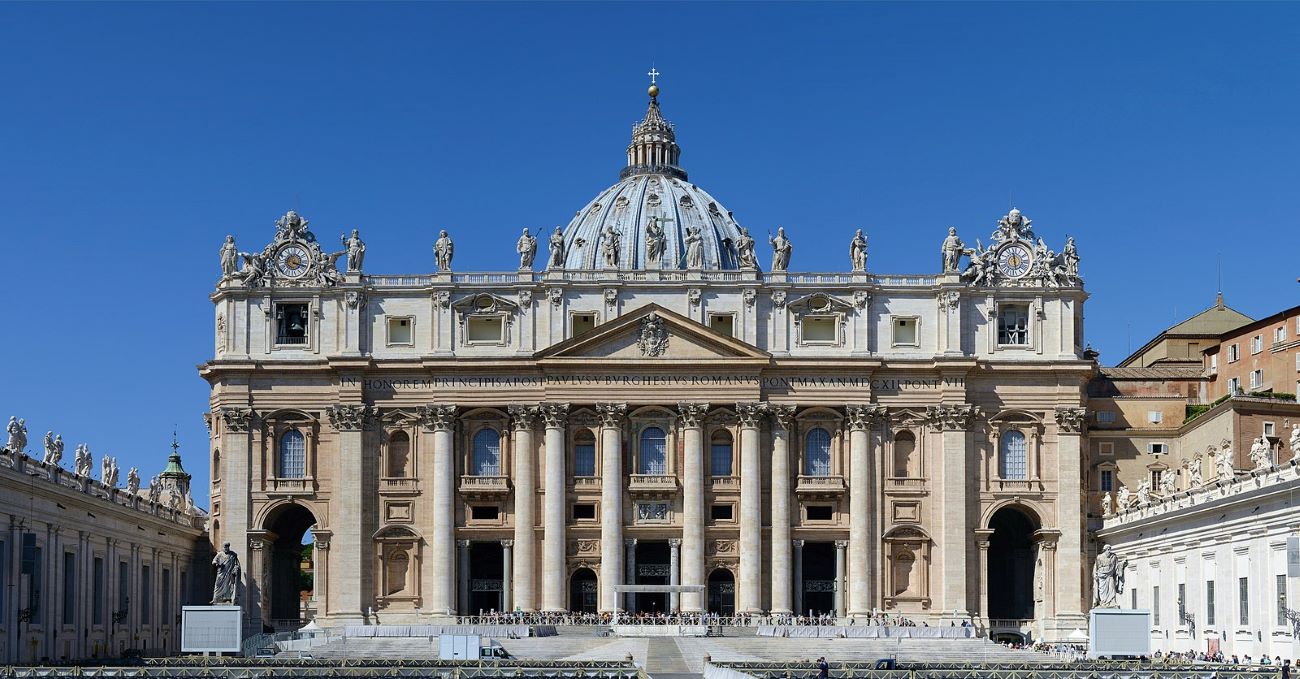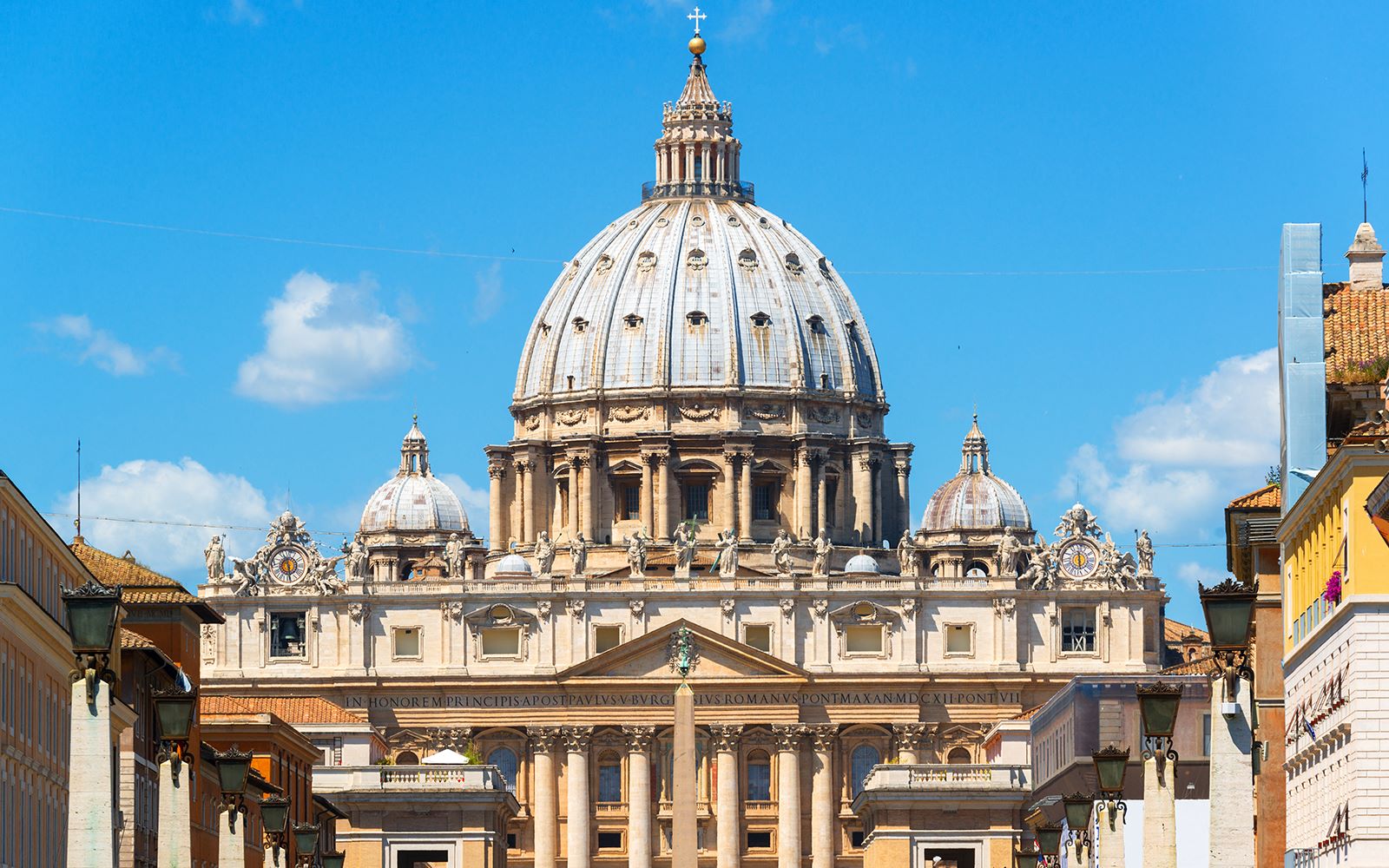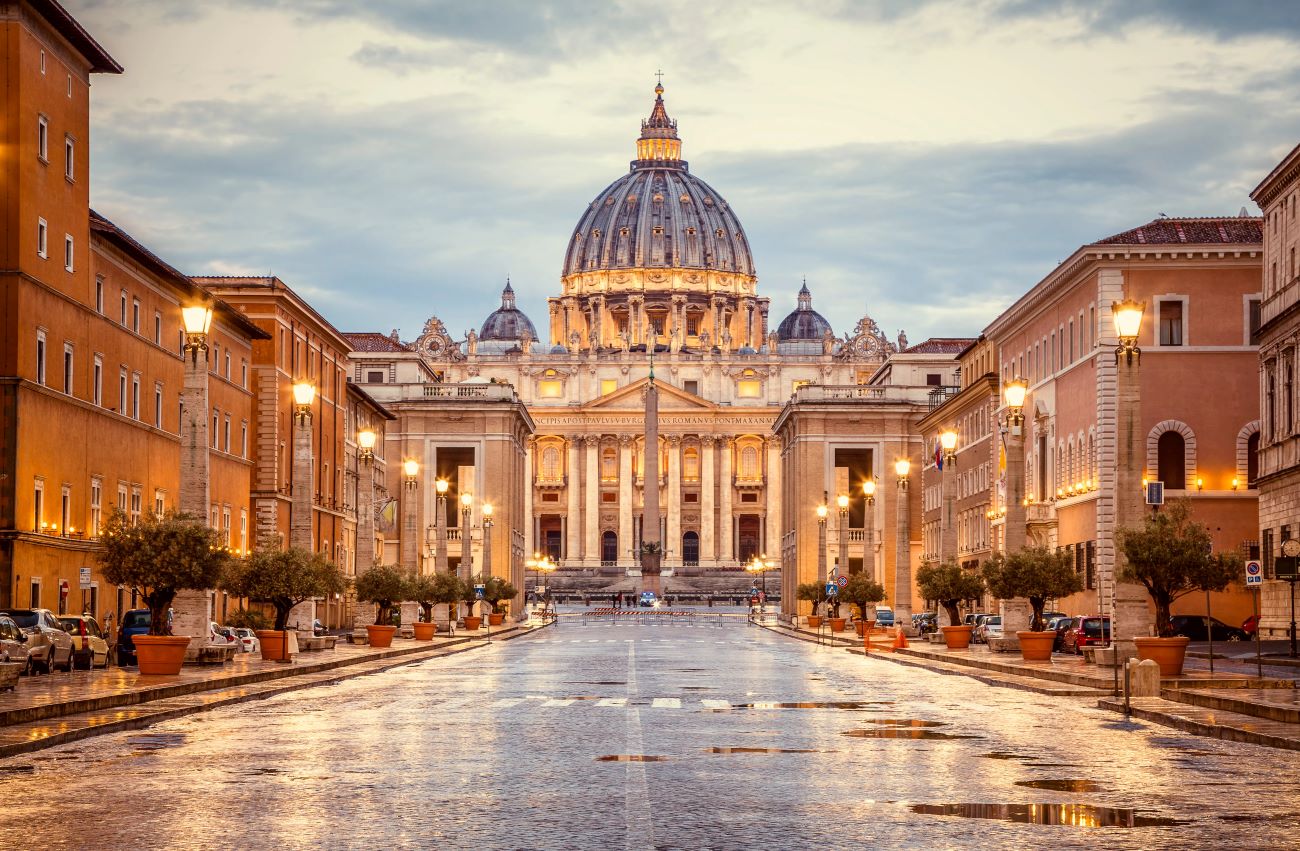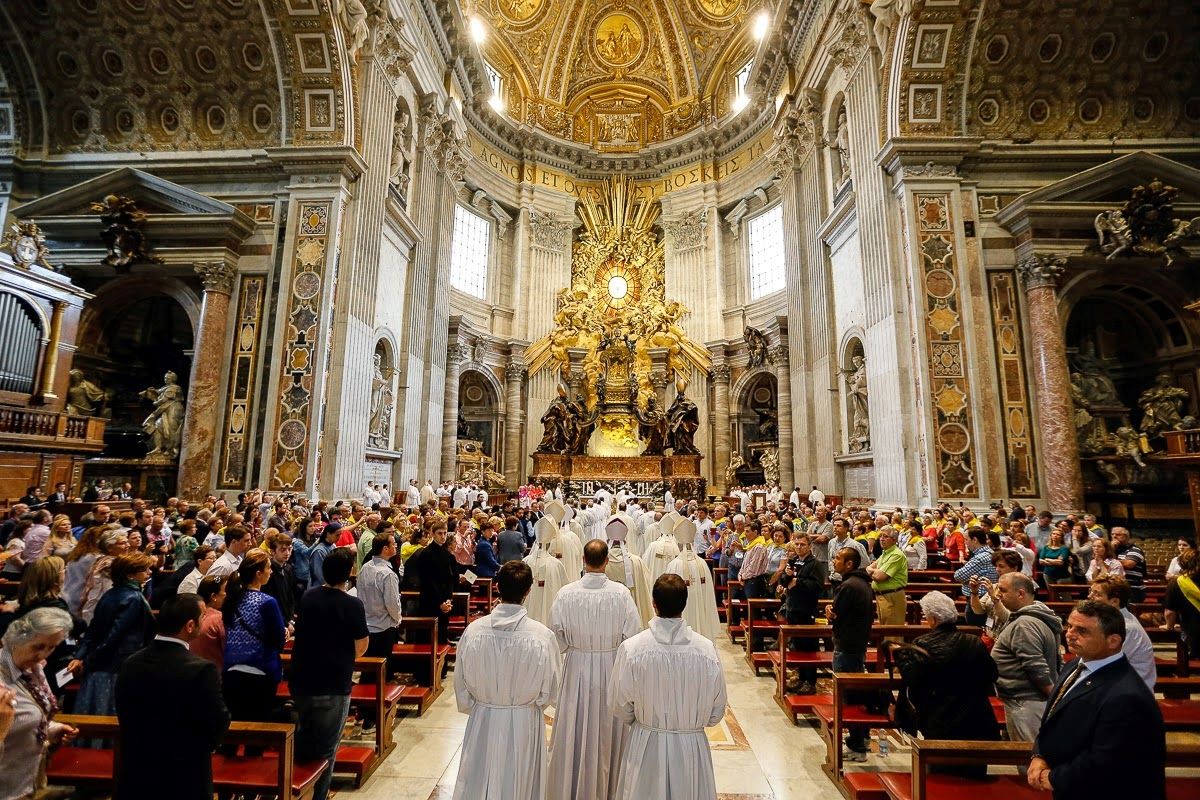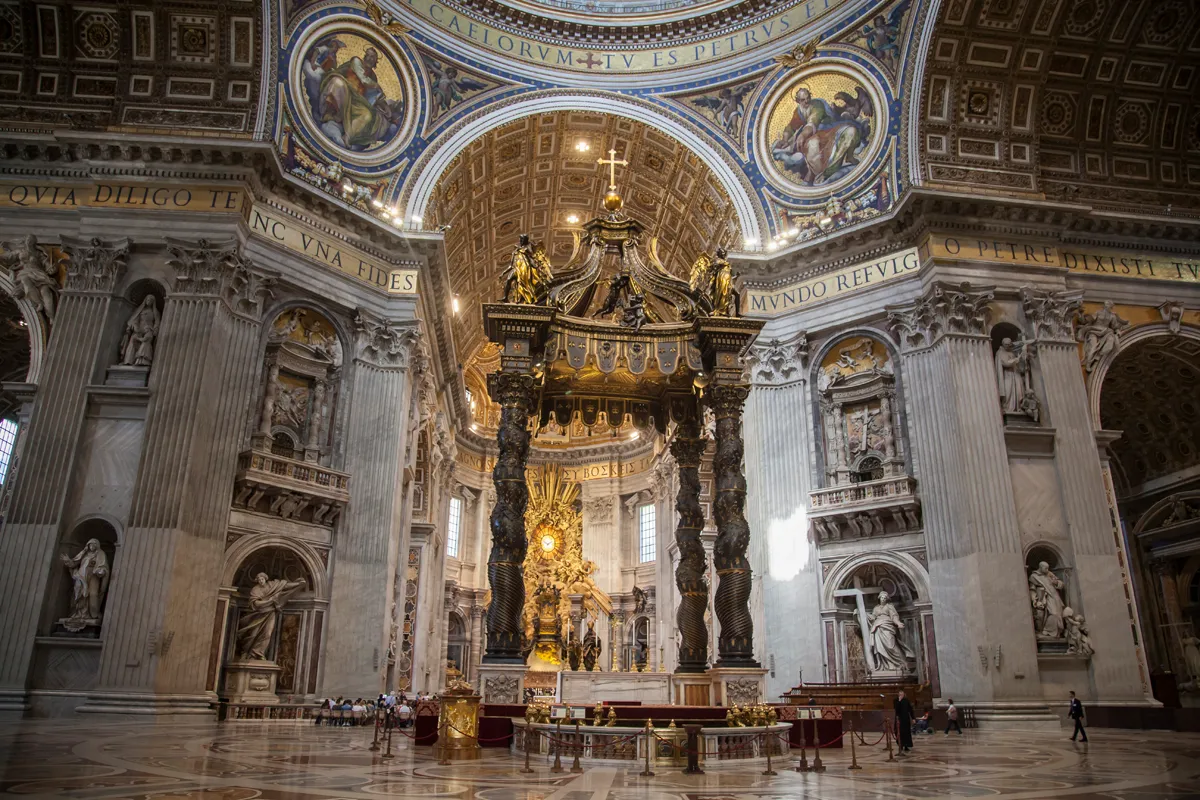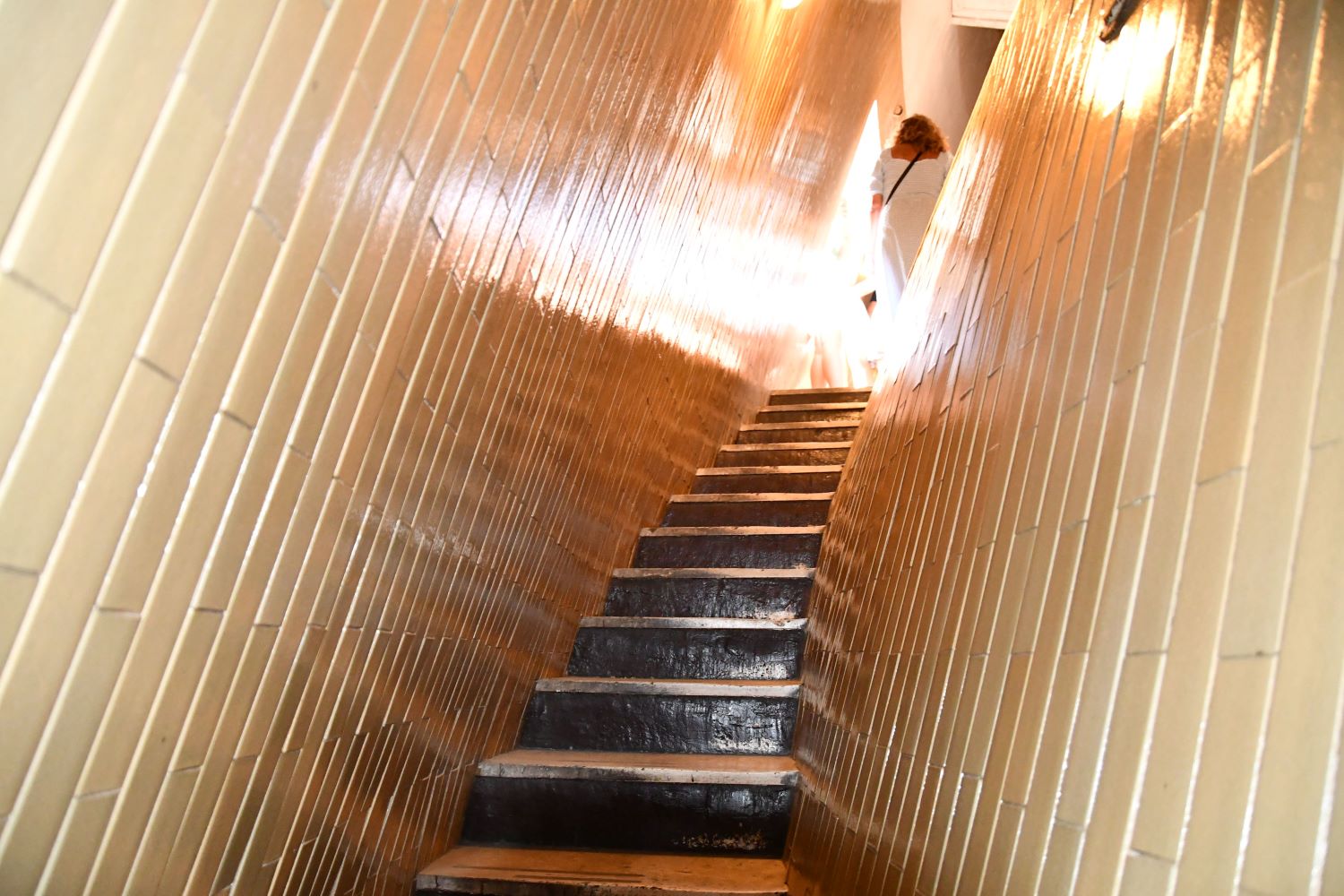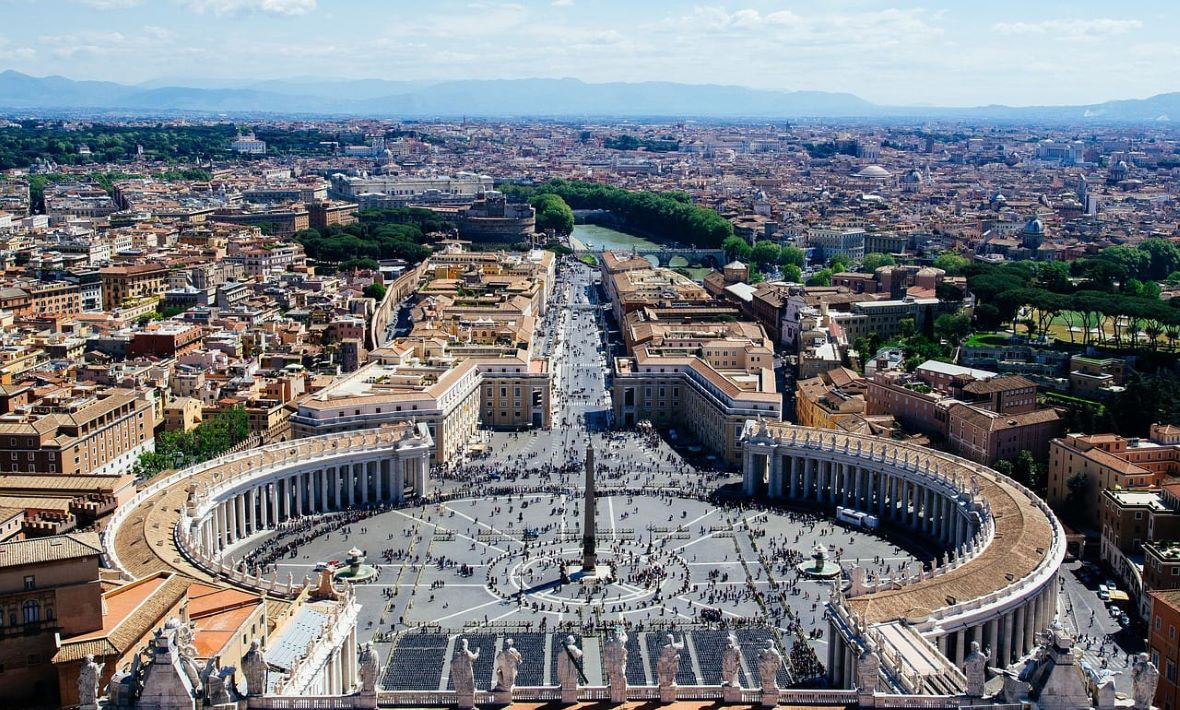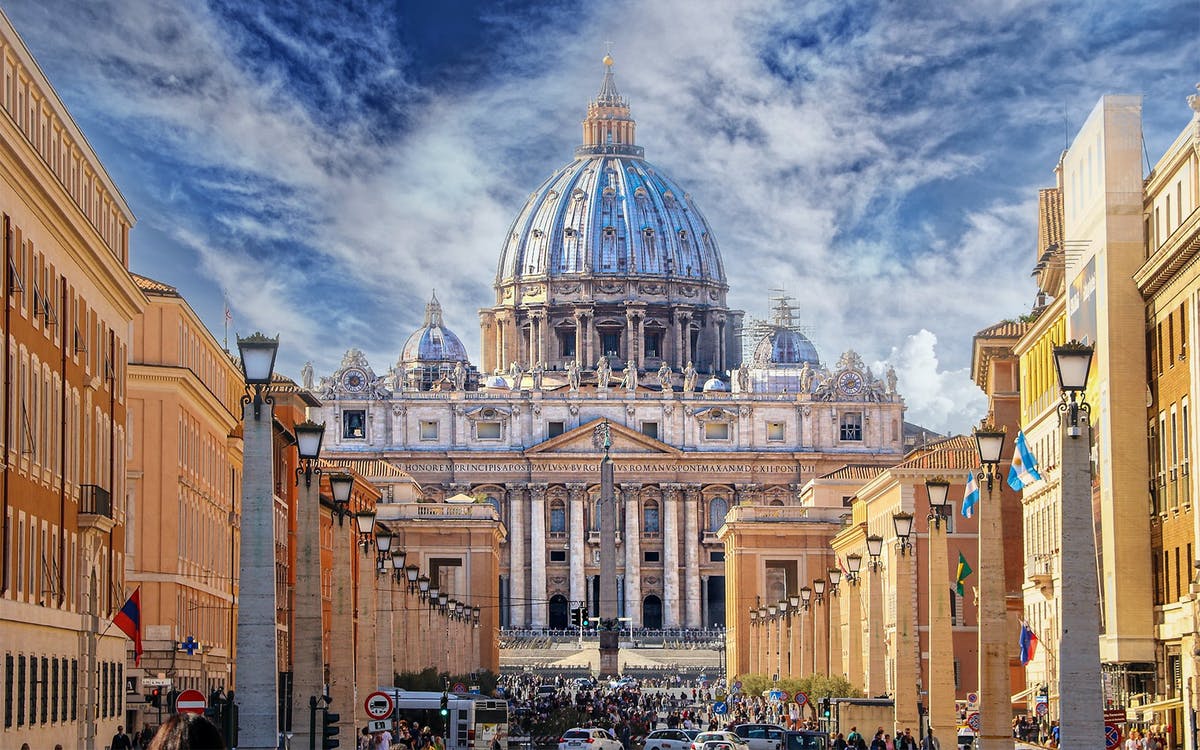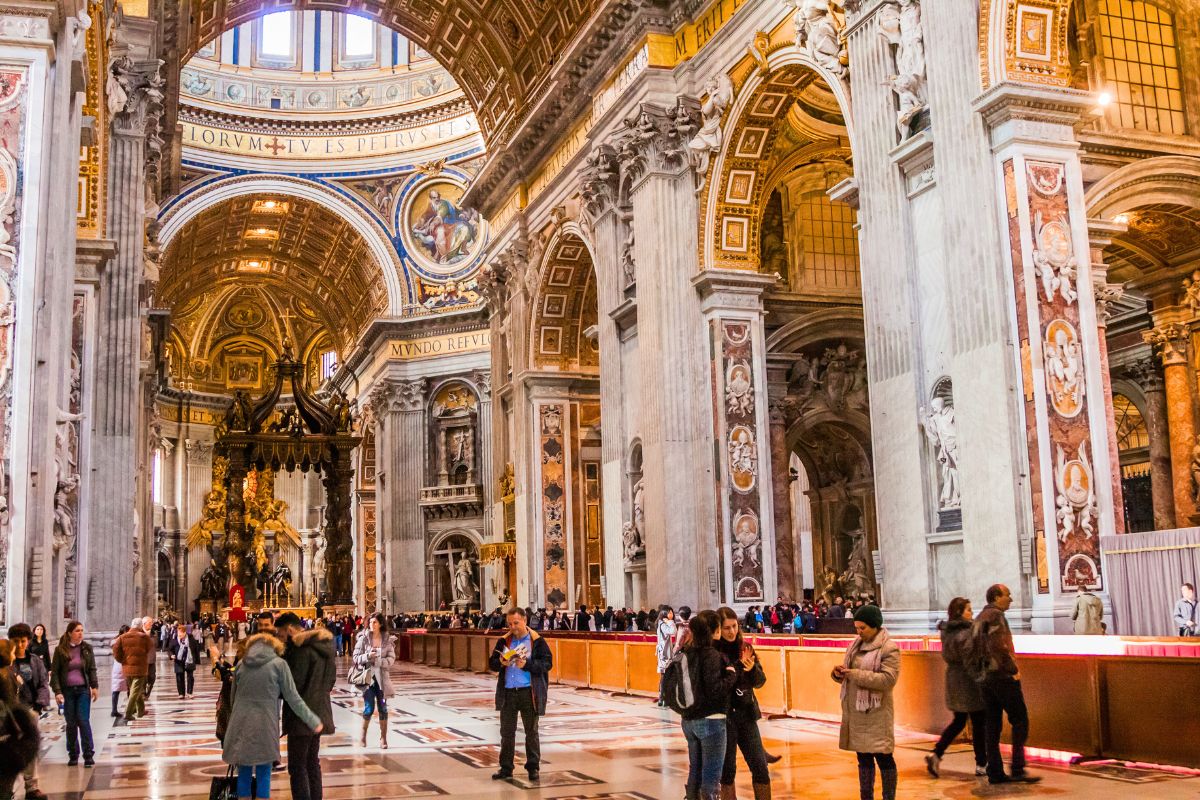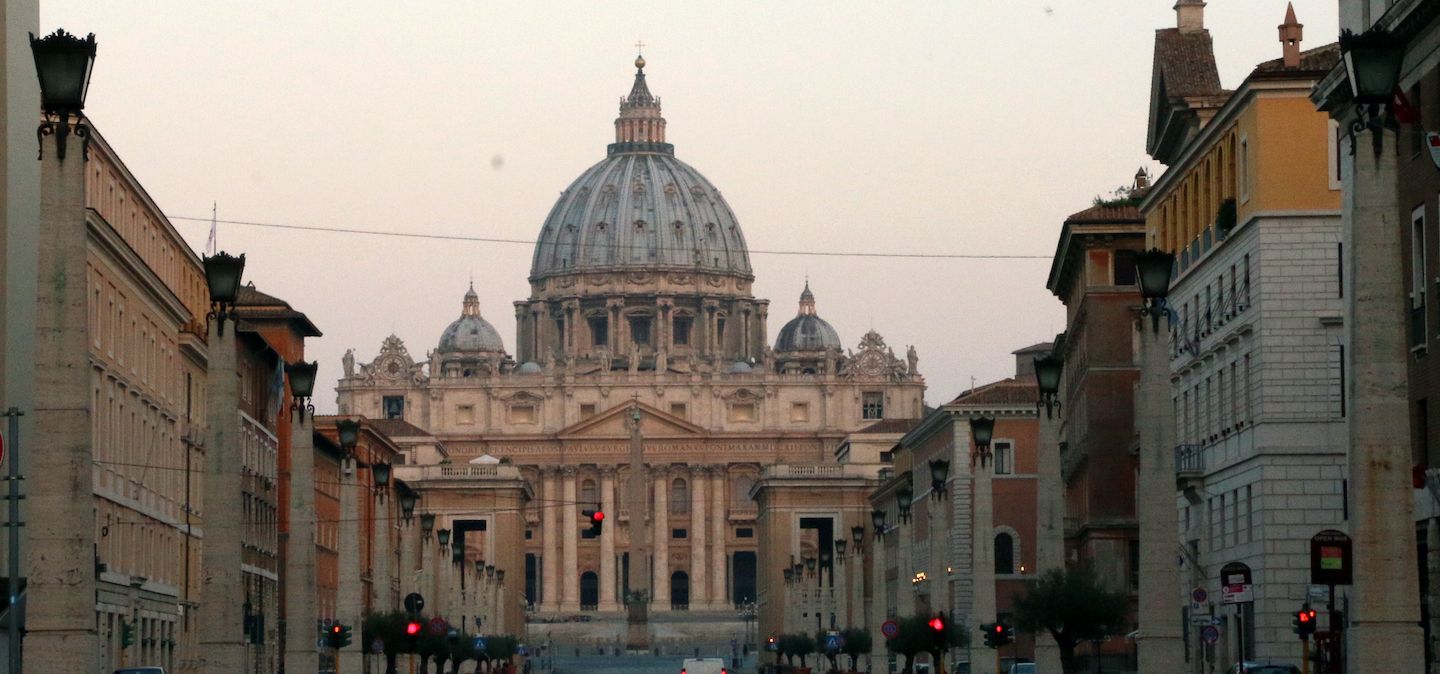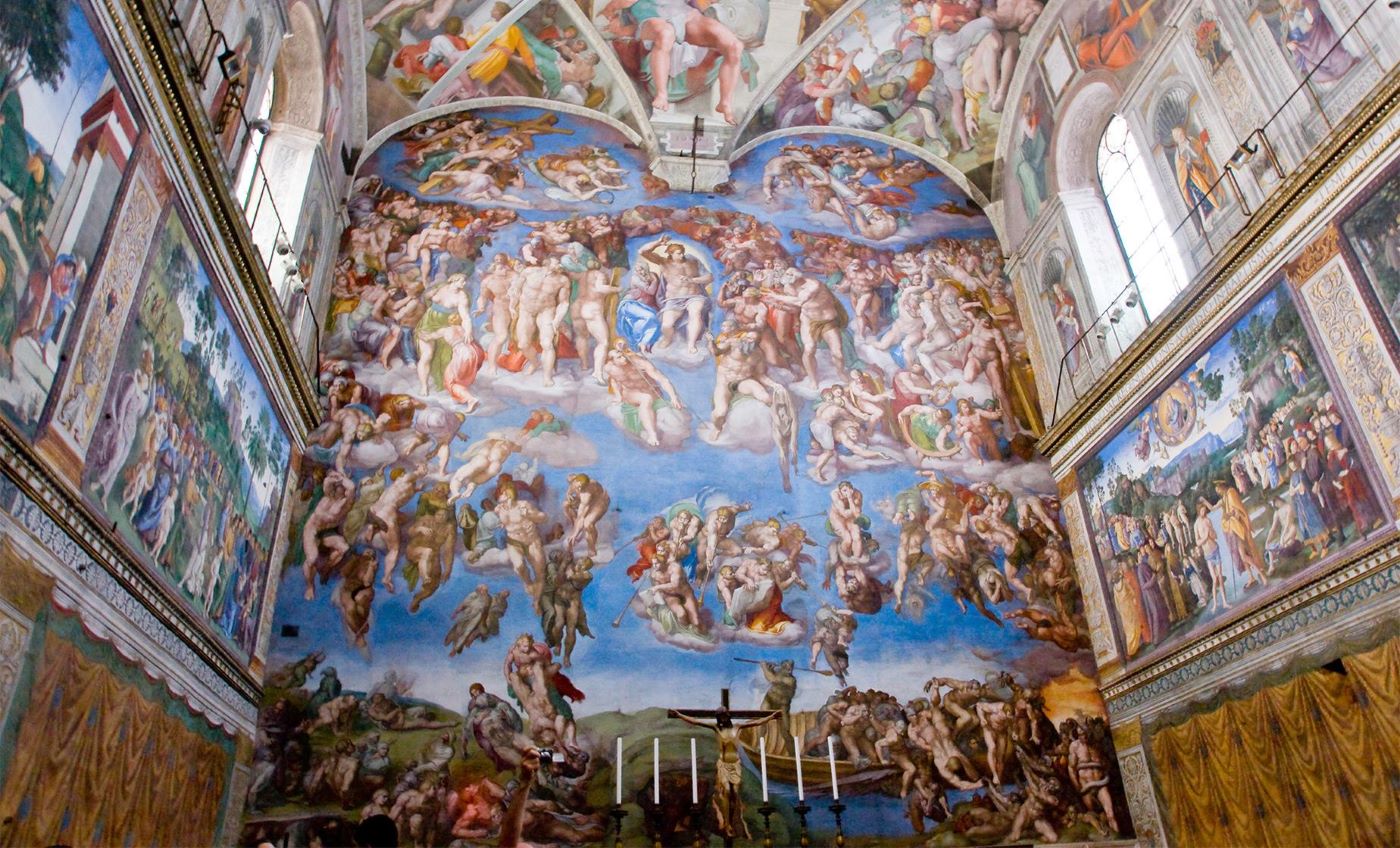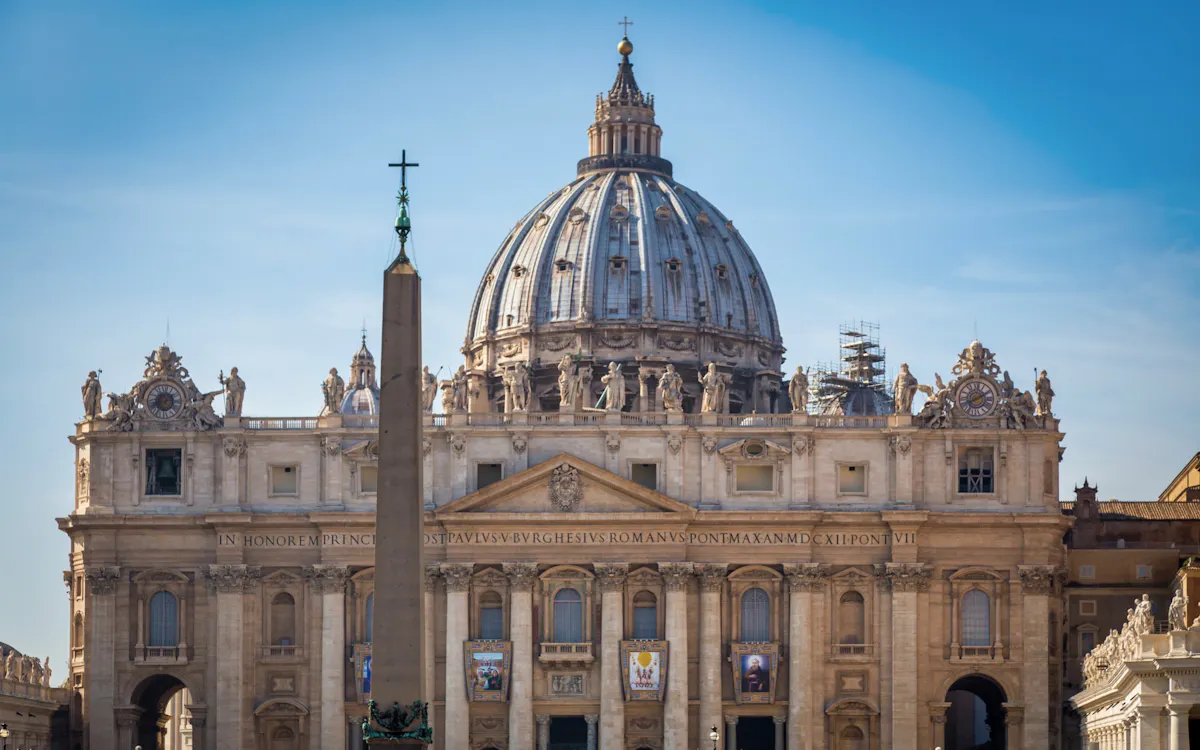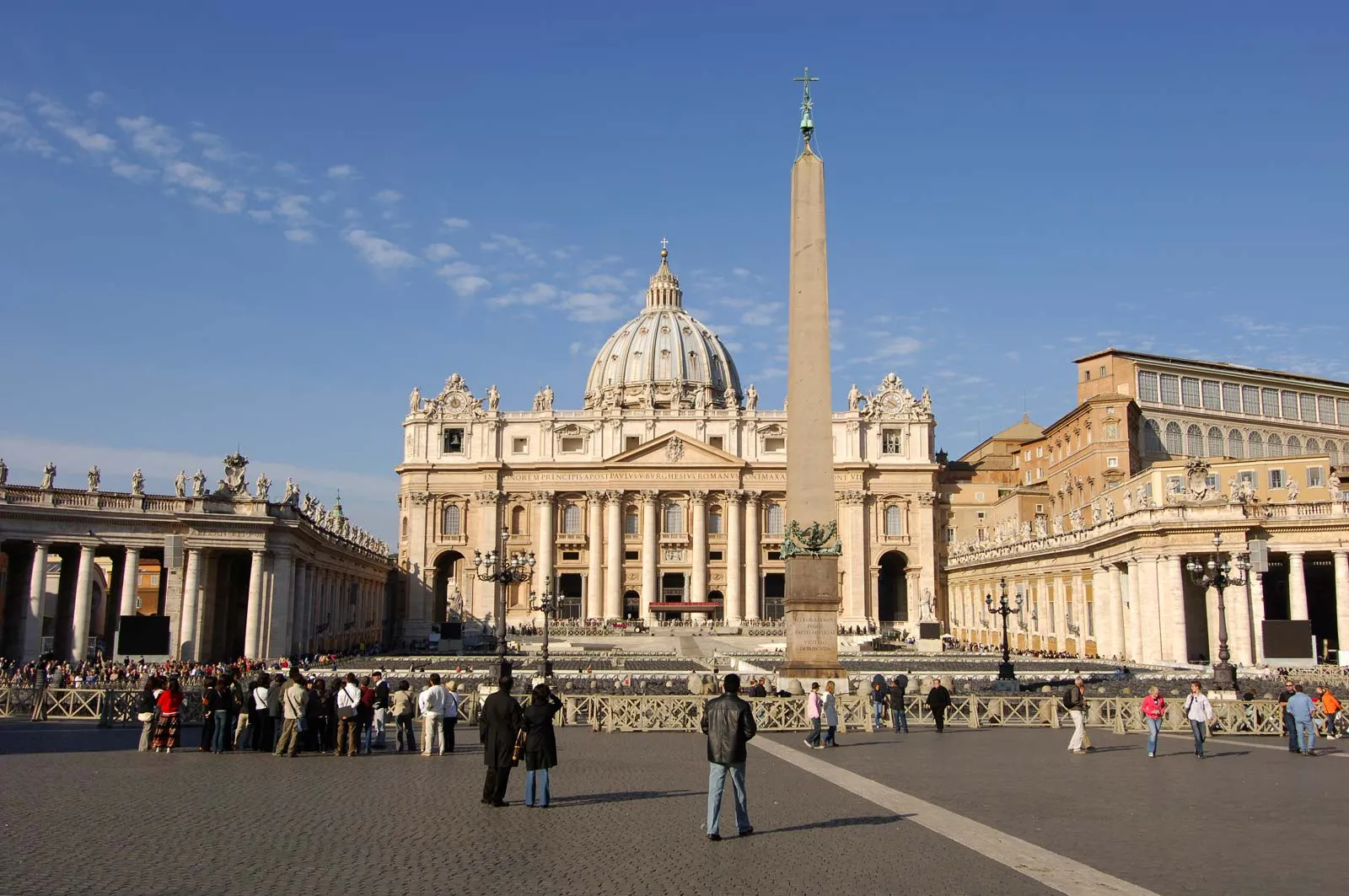Home>Arts and Culture>How Big Is The St. Peter’s Basilica
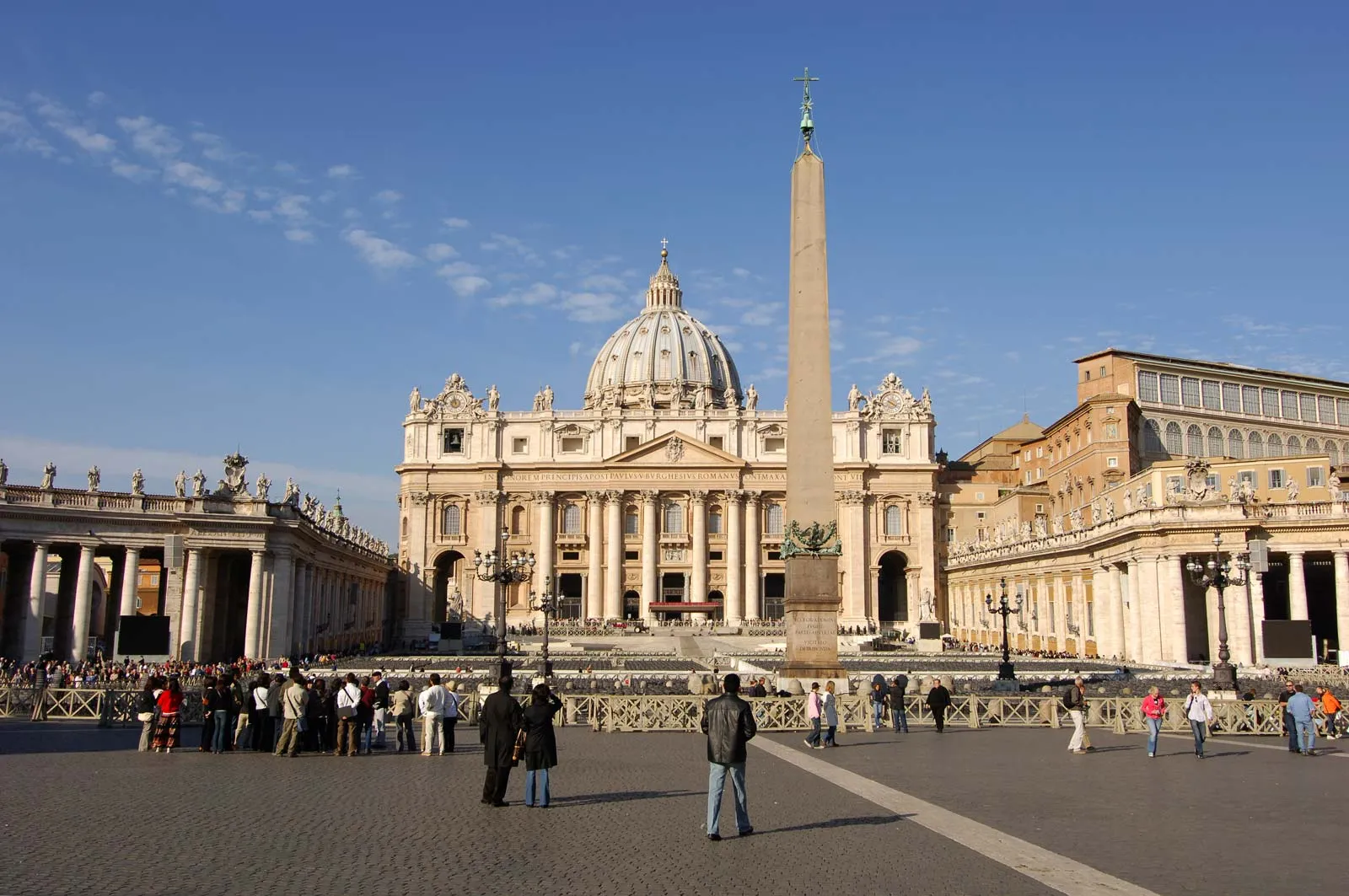

Arts and Culture
How Big Is The St. Peter’s Basilica
Published: February 10, 2024
Peter Smith, Editorial Director at Christian.net, combines deep insights into faith, politics, and culture to lead content creation that resonates widely. Awarded for his contributions to religious discourse, he previously headed a major organization for religious communicators, enhancing dialogue on faith's societal impacts.
Discover the grandeur of St. Peter's Basilica and its significance in arts and culture. Uncover the architectural marvel and historical richness of this iconic landmark.
(Many of the links in this article redirect to a specific reviewed product. Your purchase of these products through affiliate links helps to generate commission for Christian.net, at no extra cost. Learn more)
Table of Contents
Introduction
St. Peter's Basilica, an awe-inspiring architectural masterpiece nestled in the heart of Vatican City, stands as a symbol of grandeur, spirituality, and human ingenuity. This iconic structure, a beacon of the Catholic faith, has captivated the hearts and minds of millions of visitors from across the globe. Its sheer size and magnificence have earned it a place among the most revered and celebrated buildings in the world.
As we embark on a journey to explore the grandeur of St. Peter's Basilica, we will delve into its rich history, intricate architectural features, monumental dimensions, and its profound significance in the realm of art and culture. Join us as we unravel the secrets and marvels of this extraordinary edifice, standing as a testament to the enduring legacy of human creativity and devotion.
Read more: How Old Is St. Peter’s Basilica
History of St. Peter's Basilica
The history of St. Peter's Basilica is a tapestry woven with the threads of time, faith, and the ambitions of great minds. The story begins in the 4th century when Emperor Constantine the Great commissioned the construction of the original basilica on the site where St. Peter, one of the twelve apostles of Jesus, was believed to have been buried. This early basilica stood for over a millennium, witnessing the ebb and flow of history, until it became apparent that it was in need of significant renovation.
In the 16th century, Pope Julius II envisioned a grander and more magnificent basilica that would befit the spiritual and political stature of the Roman Catholic Church. The task of bringing this vision to life was entrusted to some of the most brilliant minds of the Renaissance, including Bramante, Michelangelo, and Bernini. Each architect left an indelible mark on the basilica, infusing it with their unique artistic sensibilities and technical prowess.
The construction of the new basilica was a monumental undertaking, spanning over a century and a half. The sheer scale of the project, coupled with the evolving artistic and architectural trends of the time, resulted in a structure that seamlessly blended the grandeur of the Renaissance with the timeless allure of classical Roman design.
Throughout its history, St. Peter's Basilica has weathered the storms of war, political intrigue, and the passage of time. It has stood as a symbol of continuity and resilience, bearing witness to the triumphs and tribulations of the Catholic Church and the world at large. Today, the basilica stands as a living testament to the enduring power of faith, art, and human aspiration, drawing pilgrims and admirers from every corner of the globe.
The history of St. Peter's Basilica is a saga of vision, perseverance, and the unyielding spirit of human creativity. It serves as a reminder of the profound impact that architecture and art can have on the collective consciousness of humanity, transcending generations and leaving an indelible mark on the fabric of civilization.
Architectural Features
The architectural splendor of St. Peter's Basilica is a testament to the ingenuity and artistic prowess of the Renaissance masters who contributed to its design and construction. The basilica's facade, a harmonious blend of classical and Baroque elements, exudes a sense of grandeur and spiritual transcendence. The towering Corinthian columns, intricately adorned pediments, and majestic statues of Christ, John the Baptist, and the apostles create a captivating visual symphony that beckons visitors to behold its magnificence.
Upon entering the basilica, one is immediately enveloped by a sense of awe and reverence. The vast interior space, adorned with ornate marble, gilded moldings, and masterfully crafted sculptures, evokes a profound sense of spiritual elevation. The soaring dome, designed by Michelangelo, stands as a crowning achievement of Renaissance architecture, its celestial frescoes depicting scenes from the life of Christ and the martyrs, serving as a celestial canvas that elevates the soul to heavenly realms.
The masterful use of light and space within the basilica creates an ethereal ambiance, with sunlight streaming through the stained glass windows, casting a kaleidoscope of colors upon the marble floors and gilded altars. The intricate mosaics, depicting biblical narratives and celestial visions, adorn the walls and ceilings, serving as a testament to the artistic virtuosity of the craftsmen who brought these divine visions to life.
The basilica's architectural features extend beyond its interior, encompassing the awe-inspiring colonnade designed by Gian Lorenzo Bernini. The sweeping embrace of the colonnade, with its rows of Doric columns and statues of saints, creates a sense of welcoming embrace, inviting pilgrims and visitors to experience the divine presence that permeates the sacred precincts of St. Peter's Basilica.
In every aspect of its design, St. Peter's Basilica stands as a triumph of human creativity and spiritual aspiration. Its architectural features, meticulously crafted and imbued with profound symbolism, serve as a testament to the enduring power of art and architecture to elevate the human spirit and inspire awe and wonder. As visitors gaze upon the architectural marvels of St. Peter's Basilica, they are transported to a realm where the earthly and the divine converge, leaving an indelible impression on the soul and igniting a sense of wonder that transcends time and space.
Dimensions and Measurements
The sheer scale of St. Peter's Basilica is nothing short of awe-inspiring, with its dimensions and measurements attesting to the monumental ambition and grandeur of its design. The basilica stretches across a vast expanse, measuring approximately 730 feet in length, making it one of the largest churches in the world. The imposing facade rises to a height of around 150 feet, commanding the attention of all who behold its majestic presence.
At the heart of the basilica lies the renowned dome, a marvel of engineering and artistic vision. Designed by Michelangelo and later completed by Giacomo della Porta, the dome reaches a soaring height of 448 feet, making it the tallest dome of its kind. The diameter of this architectural wonder spans an impressive 137 feet, encompassing a vast interior space that seems to ascend towards the heavens.
The interior of St. Peter's Basilica is a symphony of dimensions, with the central nave stretching over 600 feet in length and rising to a height of 150 feet. The transept, intersecting the nave, extends to a width of 195 feet, creating a sense of spatial grandeur that is unparalleled. The vastness of the interior space, adorned with ornate marble, gilded altars, and masterfully crafted sculptures, evokes a profound sense of spiritual elevation.
The basilica's architectural dimensions are not confined to its interior and facade alone. The iconic colonnade, designed by Gian Lorenzo Bernini, embraces the vast expanse of St. Peter's Square with its sweeping arms, comprising four rows of Doric columns that rise to a height of 83 feet. The colonnade, adorned with statues of saints, creates a sense of welcoming embrace, inviting pilgrims and visitors to experience the divine presence that permeates the sacred precincts of St. Peter's Basilica.
As visitors stand in the presence of these monumental dimensions and measurements, they are enveloped by a sense of humility and wonder, confronted by the sheer magnitude of human achievement and the enduring legacy of faith and artistic vision. The dimensions of St. Peter's Basilica stand as a testament to the boundless aspirations of the human spirit, transcending the constraints of time and space to inspire awe and reverence for generations to come.
Comparisons to Other Famous Buildings
When it comes to architectural marvels, St. Peter's Basilica stands in a league of its own, captivating the imagination with its grandeur and spiritual resonance. In comparing this iconic structure to other famous buildings, it becomes evident that St. Peter's Basilica occupies a unique place in the pantheon of human achievement.
In terms of sheer size, St. Peter's Basilica surpasses many renowned landmarks. Its vast interior space, stretching over 600 feet in length and rising to a height of 150 feet, dwarfs the dimensions of many other celebrated churches and cathedrals. The basilica's soaring dome, reaching a height of 448 feet, eclipses the stature of other iconic domed structures, such as the Pantheon in Rome and the Hagia Sophia in Istanbul. The monumental scale of St. Peter's Basilica sets it apart as a testament to the grand ambitions of its creators.
Architecturally, St. Peter's Basilica embodies a harmonious fusion of classical and Baroque elements, creating a visual symphony that transcends the boundaries of time and style. The facade, adorned with Corinthian columns, pediments, and statues, exudes a sense of grandeur and spiritual transcendence that is unparalleled. The basilica's interior, with its ornate marble, gilded altars, and masterfully crafted sculptures, stands as a testament to the artistic virtuosity of the Renaissance masters who contributed to its design and construction.
In terms of significance, St. Peter's Basilica holds a place of unparalleled reverence within the Catholic faith and the broader realm of art and culture. Its status as a pilgrimage site and a symbol of the enduring power of faith elevates it to a realm beyond mere architectural magnificence. The basilica's influence on subsequent architectural and artistic endeavors is immeasurable, serving as a source of inspiration for generations of architects, artists, and spiritual seekers.
While comparisons can be drawn between St. Peter's Basilica and other famous buildings in terms of size, architectural style, and historical significance, it is clear that this iconic structure stands as a peerless embodiment of human creativity, spiritual devotion, and the enduring quest for transcendence.
As visitors stand in the presence of St. Peter's Basilica, they are confronted by a monument that transcends mere physical dimensions, inviting them to contemplate the boundless aspirations of the human spirit and the timeless allure of architectural and artistic excellence.
Read more: What Country Is St. Peter’s Basilica In
Significance and Influence
St. Peter's Basilica transcends its physical dimensions to embody a profound significance that reverberates through the annals of history, spirituality, and artistic expression. As the epicenter of the Catholic faith, the basilica holds immense religious and cultural significance, drawing pilgrims and admirers from every corner of the globe. Its influence extends far beyond the realm of architecture, leaving an indelible mark on the collective consciousness of humanity.
The basilica stands as a testament to the enduring power of faith, serving as a hallowed pilgrimage site for millions of devout Catholics and spiritual seekers. Its status as the burial place of St. Peter, one of the foremost apostles of Jesus, imbues it with a sense of sacredness and historical resonance. Pilgrims from across the world flock to St. Peter's Basilica, seeking solace, inspiration, and a profound connection to the roots of their faith. The basilica's significance as a place of spiritual pilgrimage underscores its timeless allure and enduring relevance in an ever-changing world.
Beyond its religious import, St. Peter's Basilica exerts a far-reaching influence on the realms of art, architecture, and cultural heritage. The masterful fusion of Renaissance and Baroque elements within its design has inspired generations of architects, artists, and craftsmen, shaping the course of architectural history and setting a standard of aesthetic excellence. The basilica's soaring dome, majestic facade, and ornate interior stand as a testament to the boundless potential of human creativity and the enduring legacy of artistic vision.
Moreover, St. Peter's Basilica serves as a symbol of the enduring legacy of the Renaissance, embodying the spirit of humanism, innovation, and cultural resurgence that defined this pivotal era in history. The contributions of renowned artists and architects, including Michelangelo, Bramante, and Bernini, have left an indelible imprint on the basilica, infusing it with a sense of artistic transcendence that continues to captivate and inspire visitors from every corner of the globe.
In the broader cultural context, St. Peter's Basilica stands as a universal symbol of human aspiration and the pursuit of transcendence. Its timeless allure and monumental presence serve as a reminder of the enduring quest for spiritual elevation and the boundless potential of human creativity. As visitors stand in the presence of this architectural marvel, they are invited to contemplate the profound significance of St. Peter's Basilica, a monument that transcends the constraints of time and space to ignite a sense of wonder and reverence in the hearts of all who behold its grandeur.
Conclusion
In conclusion, St. Peter's Basilica stands as a testament to the enduring legacy of human creativity, spiritual devotion, and the timeless allure of architectural and artistic excellence. From its humble origins in the 4th century to its transformation into a monumental edifice of faith and grandeur, the basilica has weathered the tides of history, bearing witness to the triumphs and tribulations of the Catholic Church and the world at large.
The grandeur of St. Peter's Basilica extends far beyond its physical dimensions, encompassing a profound significance that reverberates through the annals of history, spirituality, and artistic expression. As the epicenter of the Catholic faith, the basilica holds immense religious and cultural significance, drawing pilgrims and admirers from every corner of the globe. Its influence transcends the boundaries of architecture, leaving an indelible mark on the collective consciousness of humanity.
The architectural splendor of St. Peter's Basilica, with its harmonious fusion of classical and Baroque elements, creates a visual symphony that transcends the boundaries of time and style. The basilica's interior, adorned with ornate marble, gilded altars, and masterfully crafted sculptures, stands as a testament to the artistic virtuosity of the Renaissance masters who contributed to its design and construction.
Moreover, St. Peter's Basilica serves as a symbol of the enduring legacy of the Renaissance, embodying the spirit of humanism, innovation, and cultural resurgence that defined this pivotal era in history. The contributions of renowned artists and architects have left an indelible imprint on the basilica, infusing it with a sense of artistic transcendence that continues to captivate and inspire visitors from every corner of the globe.
As visitors stand in the presence of this architectural marvel, they are invited to contemplate the profound significance of St. Peter's Basilica, a monument that transcends the constraints of time and space to ignite a sense of wonder and reverence in the hearts of all who behold its grandeur. It stands as a universal symbol of human aspiration and the pursuit of transcendence, inviting all to marvel at the boundless potential of human creativity and the enduring quest for spiritual elevation.
In essence, St. Peter's Basilica stands as a living testament to the enduring power of faith, art, and human aspiration, drawing pilgrims and admirers from every corner of the globe. Its grandeur and significance will continue to inspire awe and reverence for generations to come, serving as a beacon of spiritual elevation and artistic excellence in the ever-changing tapestry of human history.
